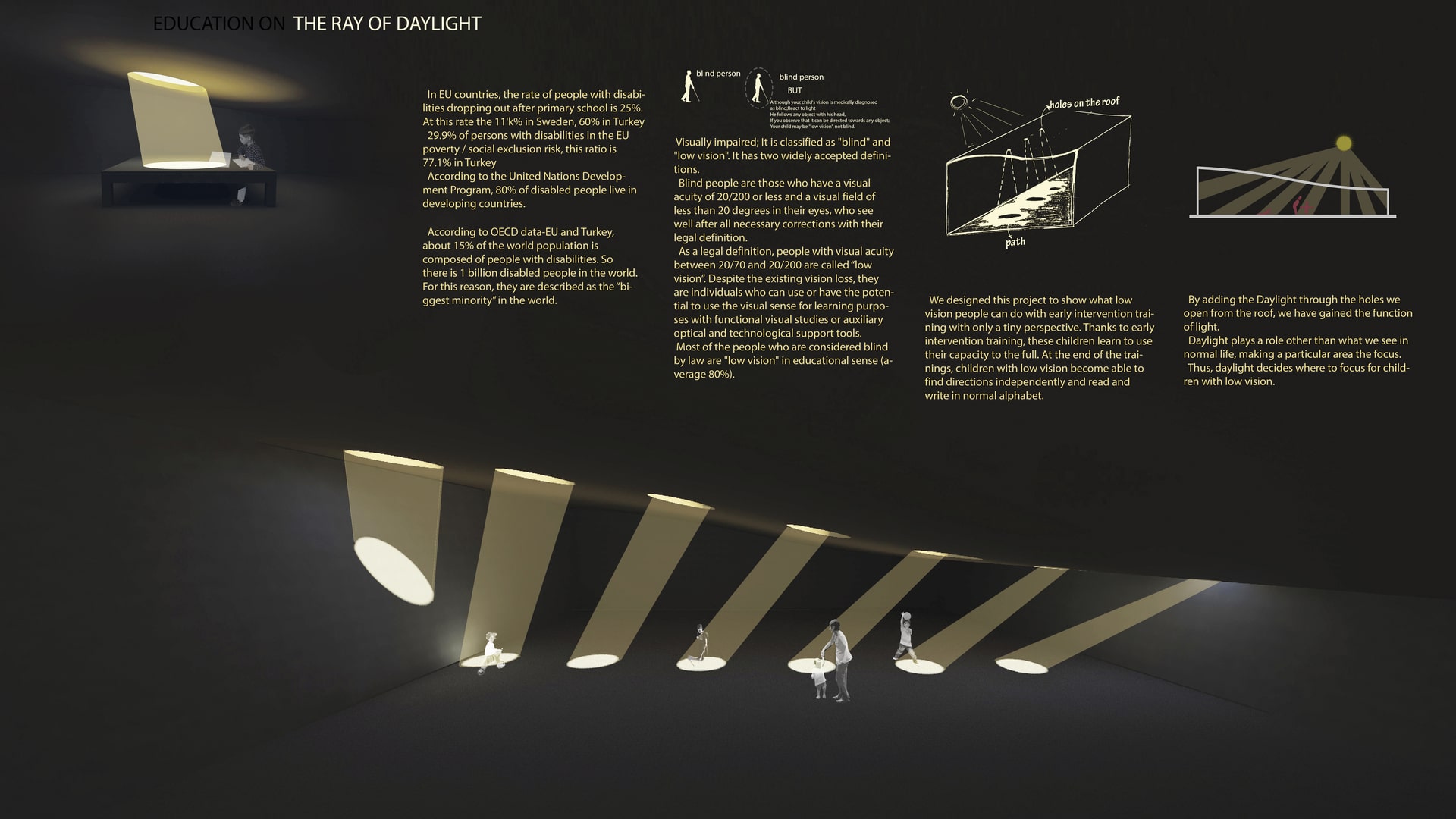Project Description
EDUCATION ON THE RAY OF DAYLIGHT Visually impaired; It is classified as "blind" and "low vision". It has two widely accepted definitions. One of them is legal and the other is educational definition. Legal definition by medical professionals and social security educational definition, while adopting educational institutions for the visually impaired vision in the eyes that sees well after all necessary corrections. “blind” to people with a sharpness of 20/200 or less and a field of vision less than 20 degrees, visual acuity. People who are between 20/70 and 20/200 are called "low vision". Educationally blind, with sense organs (touch, hearing and smell) outside the sense of vision is the person who performs learning. Despite existing vision loss, functional vision studies or auxiliary optic and technological support can use the visual sense with learning tools or has the potential to use individuals are called "low vision". Most of the people who are considered legally blind are "low vision" in educational sense. (80% on average) In our training project on the trail of daylight, our aim is to take preventive measures in the fight against blindness and It is implemented to create social awareness about disability groups. In the project that we designed based on, people who see the daylight directly under education, plays an important role in education. Daylight Project; “Low vision”, that is, between 1% and 10% and legally It is a project that enables the education of “visually impaired” children. There are approximately 290 million visually impaired people in the world. Only 39 million of this number it is completely blind and consists of those who cannot see. Almost a little in 250 million people there is always a sight of vision. This remains of sight are very precious. Because this vision even if it is 1% The remnant may be enough for 250 million people to live an independent life, regardless of the "white cane". This is exactly what we do with the Günışığı Project… In our country, it is estimated that there are approximately 800 thousand visually impaired people. Considering world statistics With that, Turkey also had been diagnosed with a majority of blind, have actually seen the ruins we can say that. In contrast, those who have a visual function below 10% legally blind they are accepted and they are mostly directed to the school of the blind and continue their education there. Early intervention education between the ages of 0-6 in children with visual impairment, is of great importance to make it functional. In order to draw attention to this point in our project, It is aimed to educate individuals who see the light in a very small amount by making them feel the light. With the early intervention training of children who have only a small residual vision, We designed it to show what they can do. These children early intervention training Thanks to them, they learn to use their capacity to the fullest. Less at the end of the trainings seeing children will be able to find direction independently without physical support or guidance, they are able to read and write in normal alphabet. In the project we designed, the holes we have opened on the ceiling, education of the educated children under daylight With the daylight, the amount of light required for their education is provided to those who see less. while it was intended to feel the light of day. By adding the Daylight through the holes we open from the roof, we have gained the function of light. Daylight plays a role other than what we see in normal life, making a particular area the focus. Thus, daylight decides where to focus for children with low vision.
